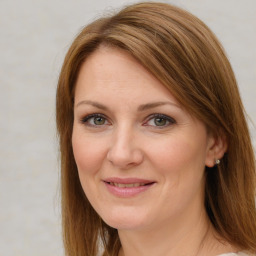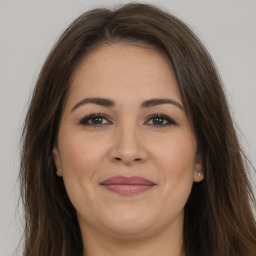Introduction to Financial Resources Management
Financial resource management is highly concerned with making effective and optimum use of money. The rationale behind this, in business monetary resources is one of the main factors that have high level of impact on the effectual execution of plan. In this, financial tools and techniques have high level of significance which in turn helps in making control on overspending. Hence, technique of budgeting control provides deeper insight about the performance level of each department. Moreover, by making comparison of the actual performance with the standard aspects business unit can assess the deviations take place in the financial aspects. In this way, by taking corrective measure business unit can make contribution in the attainment of organizational goals and objectives. The present report is based on the case situations of health care organizations which will develop understanding about the different principles of costing. Further, it will shed light on the financial tools which ensures effectual use of resources in the highly strategic business environment. Take Assignment Help now!
TASK 1
1. Explaining the principles of costing and calculating unit cost of one resident
Six important principles of costing framed by NHS are:
- Consistency: costing should be clear and clean. Information must be made accessible to all the practitioners regarding to residential home.
- Data Accuracy: It is the principle that explains data input must be accurate to costing procedures (Finkler and et.al., 2016). Inaccuracy in residential home for elderly individuals will result in prolongs treatment.
- Transparency: The information like physician licensing, clinical outcomes, patient satisfaction responses etc can be collected, reported publicly and used to benchmark the residential home and physicians on basis of quality.
- Stakeholder Engagement: Costing process involves typical stakeholder of residential home like clinical staff, nursing staff, consultants etc. It is the availability of clinical and financial commitment, to ensure quality information which work with the residential home.
- Casualty: Casualty accord with occupying and understanding the residential home's 'cause and effect relationships' for purpose of modeling.
- Objectivity: objectivity deals with applying the casualty insights of residential home in learning and optimization action (Daft and Marcic, 2016).
Calculating unit cost of one resident is enumerated below:
By using the data given of a residential home, calculate the cost of one resident per month.
- Average variable cost = £1,200/month
- Fixed cost = £900,000/year
- Number of beds = 65
Solution
- Average variable cost = £1,200/month
- Fixed cost per month = £900,000/12 = £75000
- Total variable cost = £1200*65 = £78000
- Total Cost per month = FC + TVC = 75000+78000 = £153000
- Cost for one resident per month = 153000/65 = £2353.8
2. Identifying the information which individual requires for managing the financial resources
Information required in a residential home to manage its financial resources are those data with respect to its previous and present performance, cash and fund flows as well as its daily operations. Financial difficulties are information which includes crises incorporated to cash flow and insolvency based advises for the residential home. Other information required by the residential home are of recovery of full costs, cash flow forecasting models, assets, bad debts, and management of working capital (Busch, Bauer and Orlitzky, 2016). The amount received from customers as fees, charities received from different persons, governmental and non-governmental enterprises and the funds granted by the government, amount accumulated due to various made to ascertain shortage of cash are to be managed and accounted properly so that these information can be used in cost and budgetary controlling of the residential home.
3. Explaining the regulatory requirements which are highly associated with the management of financial resources
Regulation is controlling and ascertaining the framework by government in form of legislation to check the conduct of residential home and its individuals. Main role of regulatory requirements is to reduce financial crime, promote integrity and equality, consumer protection, accountability, and maintain effective and organized structures (McBain and et.al., 2016). The various financial requirements that are to be observed by residential home operating in the social and health care sector must provide the guidelines in order to initiate management of financial resources. Example of financial requirement for residential home is developing an efficient system of risk management system so that credit activities are managed.
4. Evaluating the computer software's which make contribution in the management
What Evaluation Criteria Should You Use? Remember, software is not the only factor you should consider. Some criteria are;
Size of Your Organization: If the residential home is a very small organization Open Accounts are the best option. For a mid firm both Open Accounts, Cool care will be suitable. CareSys is suitable for an advance care organization.
Complexity of the Accounting Required: This includes type of accounts, number, and the frequency of reports, key information and details for future needs. Open Accounts have certain limitations on these basis, Cool care is having more features regarding report generating and extraction of data (Sanclemente-Ansó and et.al., 2016). In overall CareSys is best for getting an overall package.
Features and Functionality: Insuring that the basic nonprofit accounting functions described are present. Then check each feature with your needs. As cheap software Open Accounts has certain limitations, Cool Care fills those restrictions. As stated above the best option is to go away with CareSys.
Price vs. Overall Cost: Open Accounts is the cheapest available software for residential home, if the organization is planning for establishment in the near future Cool Care is a cost efficient option.
Installation: How easy is it to install or uninstall? Does it require extra consulting Euros to install? Open office is the easiest to install since it can be done with normal computer knowledge, same is with Cool Care (Olofsson and et.al., 2016). CareSys is a complete package and needs professionals to install the software.
Software Setup: How easy is it to create the chart of accounts? It's very easy in Cool Care but certain codes has to be remembered for CareSys. How quickly can you set up the software for daily use? All three are efficient for daily use. Will you require a consultant to accomplish the setup? CareSys needs a consultant (trained expertise).
Value: Whether the software is giving you the value for your money? This will prevent you from paying extra for functionalities that doesn't pay you back. It also allows you to compare software systems on the basis of what you actually use. You can check Economics Assignment Help.
We tend to help you at every step regarding Academic Assistance
Get your Assignments Now!
TASK 2
1. Discussing the different sources of income that can be used within the care home
There are several sources of income which can be used by new care home is enumerated below:
Public firm: In the present time, government also gives support to the entrepreneurs whose venture will contribute for the well being of society. Thus, care home can raise fund at cost effective interest rate by presenting plan to the government authority (Niemeyer and et.al., 2016). Hence, by raising fund through the means of government sources business entity can start and run the care home in the best possible way.
Private firm: Care home can be established by taking financial assistance from banks or lending institution. Moreover, banks are ready to provide financial support on the basis of collateral security. Hence, business entity can raise fund to the large extent by approaching financial institution for secured loan. In this, business entity is obliged to make payment of interest to the lending institution on a periodical basis. However, such source of finance will offer tax benefits to the new care home.
Voluntary organization: Care home can generate income or fund from the voluntary business organization. In the present time, there are several organizations which are ready to give money to the care institution in form of charity. This in turn helps care organization in carry out the business activities more effectively and efficiently (Wilson and et.al., 2016). Hence, equipments which are donated by the voluntary firm or individual helps care home in performing the activities in the best possible way.
REFERRENCES
- Busch, T., Bauer, R. and Orlitzky, M., 2016. Sustainable Development and Financial Markets Old Paths and New Avenues. Business & Society. 55(3). pp.303-329.
- Daft, R. and Marcic, D., 2016. Understanding management. Nelson Education.
- Finkler, S. and et.al., 2016. Financial management for public, health, and not-for-profit organizations. CQ Press.
- McBain, R. K. and et.al., 2016. Rethinking the cost of healthcare in low-resource settings: the value of time-driven activity-based costing. BMJ Global Health. 1(3). p.e000134.
- Niemeyer, C. and et.al., 2016, January. Participatory Crowdfunding: An approach towards engaging employees and citizens in institutional budgeting decisions. In 2016 49th Hawaii International Conference on System Sciences (HICSS) (pp. 2800-2808). IEEE.
- Olofsson, S. and et.al., 2016. Societal cost of subcutaneous and intravenous trastuzumab for HER2-positive breast cancer-An observational study prospectively recording resource utilization in a Swedish healthcare setting. The Breast. 29. pp.140-146.














